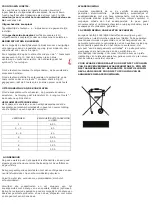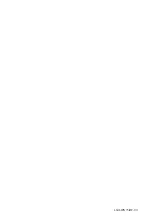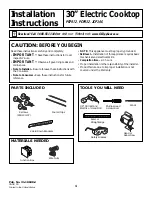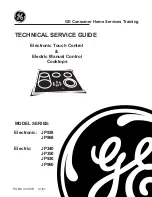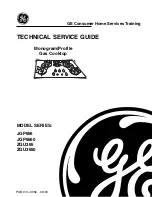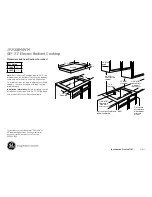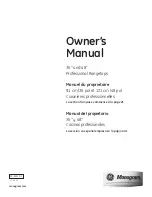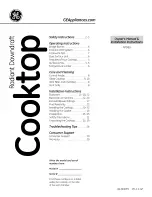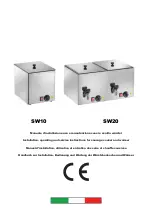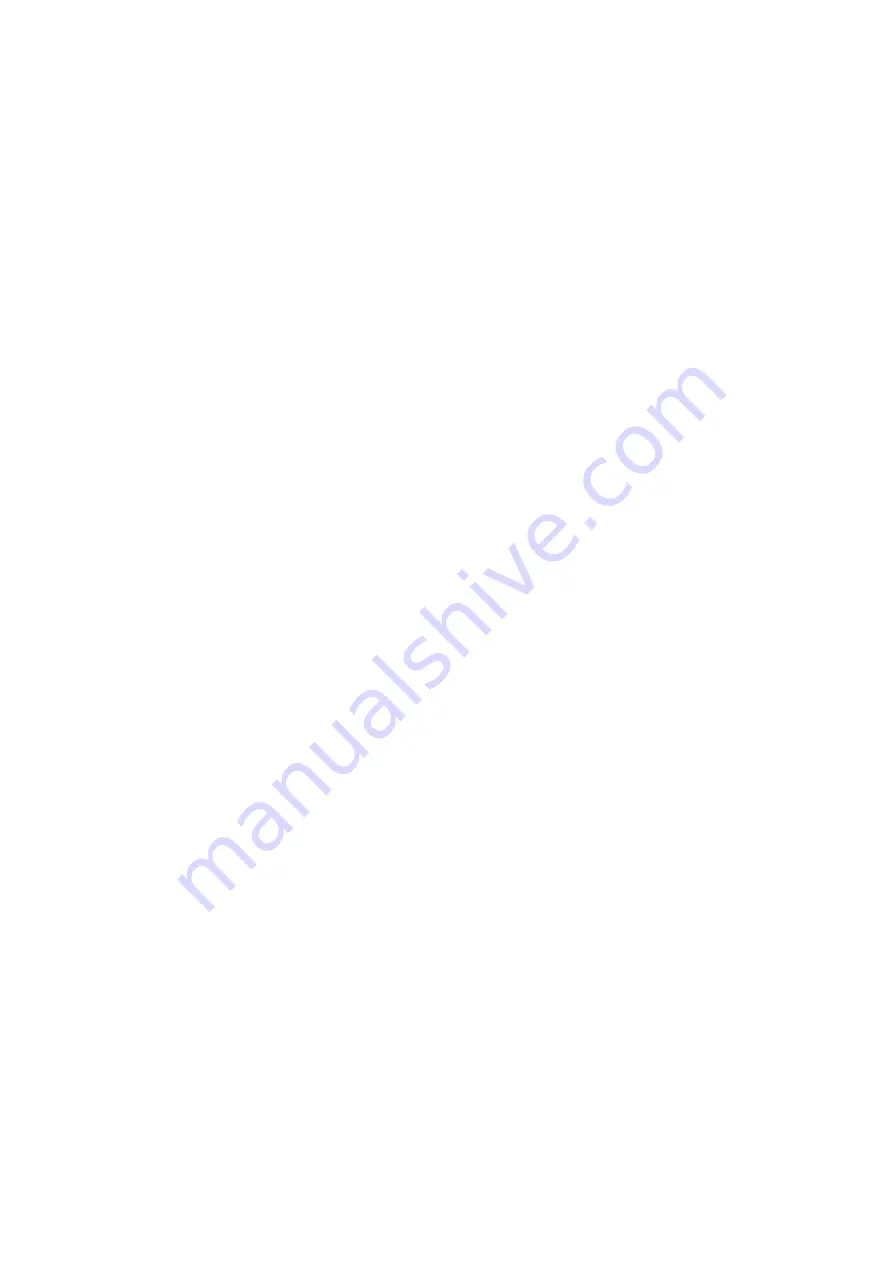
ENGLISH
1 - GENERAL
Carefully read the contents of this leaflet since it provides
important instructions regarding safety of installation, use and
maintenance. The operating instructions should be retained for
future reference.
All the operations relating to installation (electrical connections)
must be carried out by specialised personnel in accordance with
current regulations
.
2-SAFETY INSTRUCTIONS
It is best to use flat bottomed pans with a diameter equal to or
slightly larger than that of the heating area.
(Fig.6).
COOKING POTS
The use of appropriate cooking pots is an essential factor for
induction cooking.
Make sure your pots are suitable for induction system. The
international symbol identifying suitable pots for induction cooking
is illustrated in Figure 6.
Cooking pots should contain iron.
You can verify if the material of the cooking pots is magnetic by
using a magnet.
To reduce the chances of scratching the surface of the glass cook
top, avoid using rough bottomed pots. This appliance is not
intended for the use by children or infirm person without
supervision
.
3-IMPORTANT
Avoid leakage of liquid.
Do not leave heated cooking areas without tops or with empty
tops.
Once you finished cooking , switch off the related cooking area as
indicated
(paragraph 8) .
Constantly check deep fryers while using them as overheated oil
could catch fire.
If the surface of the hob is cracked, turn off the appliance
and disconnect it from the main supply in order to avoid
any possible electric shocks.
4-INSTALLATION INSTRUCTIONS
The manufacturer disclaims any liability for damage due to
improper installation or not in accordance with the best working
standards and not performed by qualified personnel in
compliance with current regulations in force in the country of
installation.
If the cooker hood is used simultaneously with appliances
powered by a non-electric energy source, the room must have
sufficient ventilation.
If the built-in oven or any other appliance generating heat, is
fitted directly under the glass ceramic cook top,
AN
ADEQUATED GAP TO INSULATE THE COOKTOP AND THE
OTHER APPLIANCE HAS TO BE PROVIDED , AS SHOWN IN
(Fig. 4).
Failure to observe this precaution could cause wrong operation of
the TOUCH CONTROL.
The appliance is designed to be built in a worktop, as shown in (Fig
1). Provide sealing material along the entire perimeter (Fig 5). This
is necessary to prevent any liquid from getting inside the cooktop.
While fixing the appliance into the worktop with the 4 supports “S”
(Fig. 2) , bear in mind the thickness of the worktop.
If, after installation, the bottom of the appliance, is accessible
from the bottom of the cabinet it is necessary to mount a
separating panel at the specified distances (Fig. 4).
5-
EXTRACTION / RECIRCULATION VERSION
EXHAUST : the exhausted air is cleaned by passing through the
metal grease filters and then conveyed outside through a ducting
pipe.
5.1- LOWER AIR OUTLET
Fasten the junction box "F" (Fig 15) through 4 screws "V" (Fig 15).
Connect through a connecting tube to the air outlet as shown in Fig
13/14. If the external pipe ducting has a different diameter, apply a
proper reduction fitting.
5.2- REAR WALL AIR OUTLET
Loosen the back panel „S“ (Fig 17) by unscrewing the 2 screws
“V” (Fig. 17).
Fix cover “T” (Fig. 19) by means of the 4 screws “V” (Fig. 19)
Loosen motor unit “G” (Fig. 17).
Drill 4 holes "F" (Fig.18) at the rear wall outlet. Fix the motor unit
"G" (Fig.17)to the rear wall with 4 screws. To fix the motor unit to
the wall ensure you use suitable plugs and screws.
RECYCLING: the exhausted air is cleaned by passing through the
grease filters
"M"
(Fig.12)
and an active carbon filter
"C"(Fig.11) -
sold separately. The recycled air is reintroduced
into the kitchen.
If you want to convey the recycled air, install a duct, connecting it
to the junction box
"F" (Fig.15)
To convert the hood from ducting to a recycling version, ask your
retailer the
recycling kit
and follow the instructions contained .
METAL GREASE FILTERS
(Fig.12).
The metal grease filters are used to hold any grease particle
suspended in the air, and are therefore subject to saturation
depending on the use of the appliance.
In any case, to avoid fire hazard, filters should be cleaned at
least every 2 months as follows:
-
remove the filters from the cooker hood
"M" (Fig.12)
and leaving them to soak, wash them in a solution of
water and neutral liquid detergent;
-
rinse thoroughly with warm water and leave to dry.
Filters may also be cleaned in a dishwasher. The aluminium filters
may alter in colour after several washings. This doesn’t give any
right on replacement of the filters.
ACTIVE CARBON FILTER
(Fig.11)
The active carbon filters purify the kitchen vapours, the air is then
reintroduced into the kitchen.
The saturation of the active carbon depends on the frequency of
the appliance’s use, the type of cooking and the regularity of
cleaning of the metal grease filters.
To remove the carbon filter, it is necessary to:
remove the metal grease filters
"M" (Fig.12),
remove the
supports
"A" (Fig.11),
pull slightly to remove the carbon filter
"C"
(Fig.11).
The carbon filters Type R (Fig. 16) are recyclable : wash the
carbon filter with warm water (65°), leave to dry and then put in
the oven at 100 ° for 10 minutes.
The carbon filters Type R (Fig.16) are recyclable up to maximum 4
times and then should be replaced.
The carbon filters Type T (Fig.16) are not recyclable and should be
replaced when saturated as previously described.
6-ELECTRICAL CONNECTIONS (
Fig.8
)
Before carrying out the electrical connections, make sure that :
the systems’ features meet the indications on the rating plate
applied on the underside of the appliance .
the system is foreseen of and efficient grounding in accordance
with the laws and current standards.
Grounding is mandatory by
law.
If the appliance is not supplied with a cable and/or suitable plug,
use material suitable for the absorption value indicated on the
rating plate and for the operating temperature.
Summary of Contents for 7708
Page 2: ...Fig 1 ...
Page 3: ...Fig 3 Fig 4 Fig 2 Fig 5 F ...
Page 4: ...Fig 6 Fig 8 Fig 9 Fig 7 ...
Page 5: ...Fig 10 Fig 11 Fig 12 ...
Page 6: ...Fig 15 Fig 13 Fig 14 Fig 16 ...
Page 7: ...Fig 17 Fig 18 Fig 19 ...
Page 23: ...L60LIPK75iRF 00 ...






















